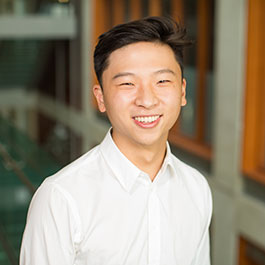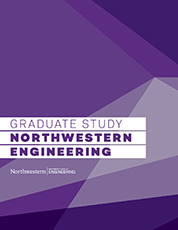Bringing Human-Centered Design to the Job Search
The Design Communication and Methods course helps students in Northwestern’s Engineering Design Innovation (EDI) program apply design thinking to career exploration activities and assets.
 Human-centered design is one of the most valuable skill sets students develop in Northwestern’s Engineering Design Innovation (EDI) program. It is an approach built on design thinking, an innovative process of user observation, visualization, rapid prototyping, and iteration.
Human-centered design is one of the most valuable skill sets students develop in Northwestern’s Engineering Design Innovation (EDI) program. It is an approach built on design thinking, an innovative process of user observation, visualization, rapid prototyping, and iteration.
But what happens when students apply that process to themselves to answer questions like who they are, what they value, and what they want to do professionally?
The answer takes shape in Design Communication and Methods, an EDI course that, since 2020, has challenged students to define what they're looking for in a career or internship, develop their personal brand, and create a cohesive suite of assets to leverage during their job search.
Jeremy Fu (EDI '22) was in the inaugural class and quickly discovered its value and benefits. Fu knew he wanted a career focused on sustainable consumer goods, but just saying he believed in sustainability wasn't going to help him stand out in a crowded job market. During his time in the course, he developed a personal brand that aligned with his commitment to sustainability and showcased his personality. Each aspect of his personal asset package — from font choices and color palettes in his resume and portfolio to the storytelling in his elevator pitch — reinforces his strengths as a design innovator while communicating his values and aspirations.
“I realized I wasn’t telling the story of how I got there: the iterations, the failures, the learnings — really trying to help a potential employer understand who I am and how I tackle problems,” Fu said. “To tell that cohesive story to an employer and let them understand your point of view — it’s really powerful in the hiring process.”
Fu used the lessons he learned in the course to secure his dream internship at electric automaker Rivian.
“Rivian was really impressed by my portfolio," he said. "Having to talk about yourself and explain your thought process is a great opportunity to put additional thought behind everything that you present.”
Design Communications and Methods is taught by EDI co-director Amy O’Keefe and Jill Sherman, who is a Design Principal at IBM. As a design lead on IBM’s quantum team, Sherman has extensive experience in creating buy-in for new ideas and deep expertise in the design industry. She stressed that the communication and presentation skills learned in this class will help students for years to come.
“We’re trying to establish a framework that the students can use not only in their time at EDI but also when they get out in the professional world,” Sherman said. “Everything is a prototype. You’re getting feedback. You’re taking that feedback and enhancing it. We’re focused on the personal brand now, but it can also be applied to your personal life and work.”
Students conduct primary and secondary research about the roles they want to work in and companies they want to attract. They then follow the design thinking process to conduct interviews, build frameworks to organize their insights, and prototype their assets. They’re challenged to consider the end user in every aspect of their deliverables.
“The work our students are going out into the industry to do is not traditional,” O'Keefe said. “They need to be able to demonstrate the innovation process not just through their projects, but as they’re telling their own story.”
Outside of visual assets, students also develop a formula for nailing important conversations. In one exercise, they create three different versions of an elevator pitch that they can use to request mentorship, get an informational interview, or to use in an actual elevator.
This year, Fu joined the teaching team as a design coach for current first-year students. Fu actively participated in the class and offered one-on-one support. His own experiences in the course and securing his internship made him an invaluable resource.
“I feel like I had an opportunity to have an impact on their work,” Fu said. “I see the growth I had and try to cultivate that in others. Using my real-world experience to help shape how they present themselves has been an awesome way to contribute back to the EDI community.”

